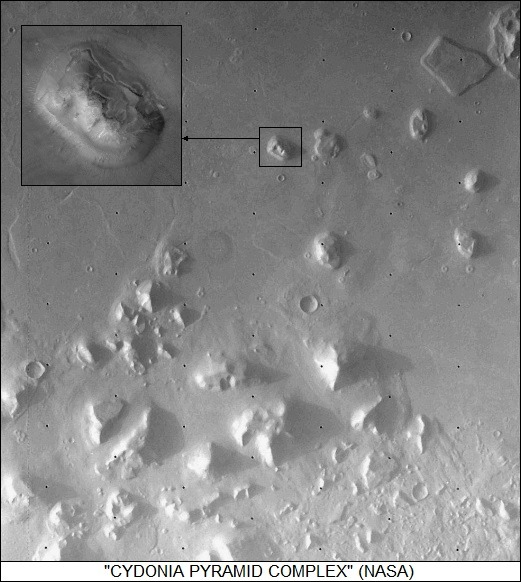"NASA’s Perseverance rover, shown in this artistic rendering, landed at Mars’ Jezero Crater in February 2021 and started gathering soil samples soon after that. Although Perseverance is not looking directly for organisms living on Mars today, the rover is collecting data that could be used to identify biosignatures of ancient microbial life. Credit: NASA/JPL-Caltech" (ScitechDaily.com/We Asked a NASA Scientist: Is There Life on Mars?)
Another question about this topic again. The answer to that question is very complicated. Before samples from the red planet are transferred to the BL-5 level laboratory where research teams can make the real chemical and microscopic analysis all answers are open. The BL-5 laboratories are required because those samples pollute very easily.
"Electron microscopy revealed chain structures resembling living organisms in meteorite fragment ALH84001". (Wikipedia/https://en.wikipedia.org/wiki/Allan_Hills_84001). Those remnants could be bacteria fossils that could have a Martian origin.
And if some DNA from Earth touches them. That makes it hard to detect the DNA or RNA samples from those bacteria remnants. Nobody believes that there are living bacteria on Mars. But there might be some bacteria fossils, there could be remnants of their genomes.
The fact is before intensive research the question about primitive lifeforms on Mars is open. And the problem is that Mars lost its atmosphere in multiple meteorite impacts. At least three times Mars lost its lithosphere in deep impacts with asteroids. In that process, the position of the red planet changed. The shell of that planet melted. And that destroyed all lifeforms. But it's possible. That there still are DNA or RNA remnants in those stones.
The big problem with searching for extraterrestrial bacteria is the lack of extraterrestrial DNA or RNA. No sample involves DNA that is 100% proven to be extraterrestrial. So without that information, it's very difficult to separate extraterrestrial bacteria from Earth bacteria. And the problem is that bacteria exchange their genomes. That means there is very hard to prove the extraterrestrial origin of some bacteria fossils even if there are some DNA or RNA remnants.
And finally, "the face, Cydonia and Little Green men.
The "Cydonia City" is named because of the shape of those forms. The fact is that the "city" is an interesting place. And in some theories that is an abandoned alien city. The fact is that those pyramid-shaped structures. Along with " the face", are interesting because the geological process behind them is extraordinary.
Theoretically, we can create green skin for ourselves very easily. By using genetic engineering and nanotechnology, we can connect the genome that makes the chlorophyll in our skin cells. And that thing turns our skin photosynthetic. We must remember that there are also green snakes and other green reptilians on Earth. Chlorophyll would turn the skin green and make it possible. Animals can create sugars and vitamin C in their skin.
The other interesting things are the "face" and "Cydonia. The problem is that those things are very interesting because there is a possibility that the "face" was a short-term geological structure. But what forms that structure? Also the "ruins" are interesting and that opens new questions. What is behind those structures? The thing is that three images from Viking 1 to Mars Global Surveyor 2001 show that the structure was real. But the geological process behind it is anyway interesting.
But what if researchers find remnants of the things like human enterobacterium from Mars samples? That thing makes very big thoughts in the minds of researchers. There are lots of mysteries in the universe. And one of the things that we might think about is the possibility that some Earth bacteria will be found on Mars in an area. there are no probes. When we search for the origin of life we cannot close anything away from our minds. When we are talking and reading about myths of ancient aliens. We must keep our minds open.
https://science.nasa.gov/face-mars
https://scitechdaily.com/we-asked-a-nasa-scientist-is-there-life-on-mars/
https://en.wikipedia.org/wiki/Allan_Hills_84001
https://en.wikipedia.org/wiki/Cydonia_(Mars)









No comments:
Post a Comment
Note: Only a member of this blog may post a comment.